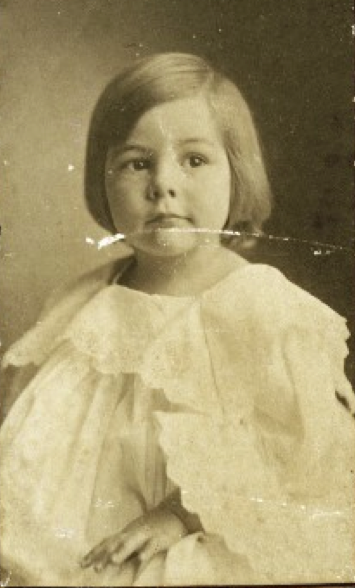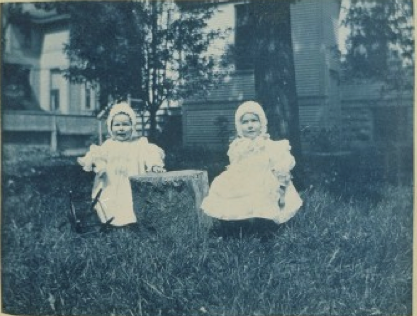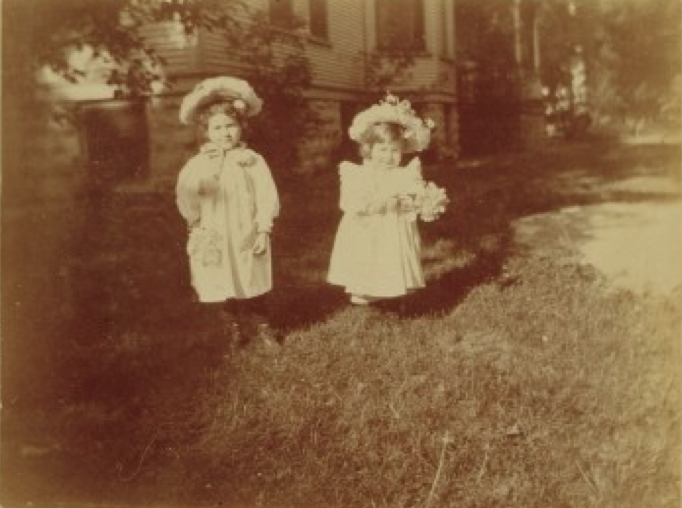
It may be true that speculation about an author’s personal history can prove not especially illuminating to reading their books. We generally think it best to read a literary work on its own terms. But in certain cases, as in the well-worn case of Ernest Hemingway, the parallels between life and work are impossible to ignore or to pass over without comment, and, for many critics, this goes particularly for discussions about Hemingway’s gender and sexuality. Even Hemingway’s contemporaries had their commentary. Zelda Fitzgerald supposedly remarked that no one could be as masculine as Hemingway, for example, and Virginia Woolf referred to him as “self consciously virile.” Themes of homosexuality and gender anxiety crop up in Hemingway’s fiction, and more prominently in unpublished work unearthed in the 1980s.

For critics like Debra Moddelmog, author of Reading Desire: In Pursuit if Ernest Hemingway, the biographical interest begins with the hyper-macho modernist’s early childhood, during which his mother Grace raised him and his older sister Marcelline as twin girls, dressing them alike “in fancy dresses and flowered hats.” This apparently happened over a period of several years, until Hemingway was at least five years old, and Grace even held Marcelline back a year so that the two could attend the same grade. Though one of Hemingway’s younger sisters, Sunny, has “denied that the twinning ever took place” the evidence seems to show otherwise—in Marcelline’s reminisces and in photograph after photograph of young Ernest and Marcelline dressed exactly alike and having tea parties, riding in wagons, and holding bouquets. You can see them in 1901, in bonnets above and flowered hats below.

At the top of the post, see Hemingway in a girlish haircut identical to his sister’s, and below, see two photographs of him in a wide-shouldered dress. At the JFK Library website (click here and scroll to bottom), you can now view many more of these photographs from Hemingway’s first few years on up to the age of 18. The digitized collection of six childhood scrapbooks, the library writes, were “collected by Ernest Hemingway himself and donated to the John F. Kennedy Library by his widow, Mary Hemingway.” Many of the childhood photographs are fascinating for various reasons, though the “twinning” photographs have provoked the most interest and contributed to already rich theories of Hemingway’s identity as a person and an artist.

Looked at in the context of the time, these photographs don’t seem all that odd. As anyone who has flipped through family albums from the turn of the century (should they have them) will have noticed, little boys were routinely dressed in ambiguously girlish attire, their long hair often styled and curled. The fashion derived partly from a hugely popular character in children’s fiction named “Little Lord Fauntleroy,” the Harry Potter of his day, who had a rags-to-riches story that captivated American readers especially. The character has been the subject of film adaptations even as late as 1980, in which he was played by a young Ricky Schroeder. Fauntleroy had some influence on Grace Hemingway. (See Hemingway in a Lord Fauntleroy suit, with football, in a 1909 photograph below.)

Fauntleroy and other similar characters’ model of “genteel manhood” gained widespread currency. Frances Hodgson Burnett’s Victorian novels featuring this character came at a time when childhood was viewed through a much different lens than it is today. (As we’ve seen in the photography of Lewis Carroll and many other artists of the time in which children appear as props and dolls, sometimes in strangely suggestive or androgynous poses that would not have seemed especially prurient or gender-bending to their original viewers.) The trend continued into the early twentieth century. Nonetheless, despite less rigid childhood gender norms, as Hemingway biographer Kenneth Schuyler Lynn writes, Grace Hemingway’s “elaborate pretense that little Ernest and his sister were twins of the same sex” was very unusual. Critics like Moddelmog and Mark Spilka have argued convincingly that Hemingway “rebelled against that identity,” a rebellion that “lasted a lifetime.”
Related Content:
18 (Free) Books Ernest Hemingway Wished He Could Read Again for the First Time
Download 55 Free Online Literature Courses: From Dante and Milton to Kerouac and Tolkien
Lewis Carroll’s Photographs of Alice Liddell, the Inspiration for Alice in Wonderland
Josh Jones is a writer and musician based in Durham, NC. Follow him at @jdmagness


Many little boys were dressed up in this fashion. They weren’t dressed up as girls, they were dressed in the fashion of the time. I saw a picture of my father with his grandmother and he was also dressed up in what would be considered a girlish style nowadays.
thought you might be interested in this…hemingways’s advice to a young writer love you , Grama Honey
atrociously researched article written by someone too young to remember before automated washing machines and disposable diapers, when breeching was a nearly universal social custom. Perhaps next we shall read about how alexander the great was an environmentalist because he never traveled by car. temporal context matters.